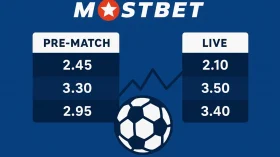Sports news and analysis form a vital part of the modern media landscape, providing fans, analysts, and enthusiasts with in-depth information, expert opinions, and comprehensive coverage of sporting events worldwide. This domain has evolved significantly over the years, driven by advancements in technology, the growing popularity of various sports, and the increasing demand for detailed and accurate information. In this text, we will delve into the importance, methodologies, and impacts of sports news and analysis, offering a detailed exploration of this fascinating field.
The Importance of Sports News
Sports news serves multiple purposes, acting as a critical source of information, entertainment, and engagement for fans globally. One of its primary functions is to keep audiences updated with the latest developments in their favorite sports, teams, and athletes. This includes reporting on game scores, player transfers, injuries, and other significant events that can influence the dynamics of sports competitions.
Through timely and accurate reporting, sports news helps fans stay connected with the sports they love, fostering a sense of community and shared enthusiasm.
Additionally, sports news plays a crucial role in the broader context of media and society. It provides a platform for showcasing remarkable human achievements, highlighting the dedication, skill, and perseverance of athletes. Sports news stories often go beyond the playing field, covering topics such as sportsmanship, ethics, and the societal impact of sports. By doing so, it contributes to important conversations about values, community, and the role of sports in cultural and social development.
The Evolution of Sports Analysis
Sports analysis has come a long way from its early days, when it primarily involved basic commentary and subjective opinions. Today, sports analysis is a sophisticated field that combines traditional expertise with cutting-edge technology and advanced statistical methods. This evolution has been driven by several factors, including the advent of big data, the rise of sports analytics, and the increasing complexity of sports themselves.
Modern sports analysis leverages a wide range of tools and techniques to provide deeper insights into games, players, and strategies. Advanced metrics, such as player efficiency ratings (PER), expected goals (xG), and win shares, offer a more nuanced understanding of performance beyond traditional statistics like points scored or goals made. Video analysis tools allow analysts to break down plays frame by frame, examining player movements, tactical formations, and decision-making processes in detail.
Furthermore, sports analysis has become more accessible to the general public. With the proliferation of sports blogs, podcasts, and social media, fans can engage with detailed analytical content, enhancing their understanding and appreciation of the games they watch. This democratization of sports analysis has led to a more informed and engaged fan base, driving further interest and investment in the field.
Methodologies in Sports Analysis
Sports analysis employs a variety of methodologies, ranging from quantitative data analysis to qualitative assessments and visualizations. Quantitative analysis involves the use of statistical techniques to interpret numerical data, providing objective measures of performance and trends. This includes calculating averages, ratios, and probabilities, as well as applying more complex statistical models to predict outcomes and evaluate player contributions.
Qualitative analysis, on the other hand, focuses on subjective aspects of performance, such as player behavior, team dynamics, and psychological factors. This type of analysis often involves expert commentary, interviews with players and coaches, and observational studies. By integrating both quantitative and qualitative approaches, analysts can offer a more holistic view of sports performance, capturing both the measurable and intangible elements of the game.
Visualizations play a crucial role in sports analysis, making complex data more accessible and easier to understand.
Graphs, charts, heat maps, and other visual tools help to illustrate patterns, trends, and relationships within the data. For example, shot charts in basketball can show the effectiveness of players from different areas on the court, while possession heat maps in soccer can highlight a team’s dominance in various zones of the pitch.
The Impact of Technology
Technology has revolutionized sports news and analysis, providing new tools and platforms for gathering, analyzing, and disseminating information. Wearable technology, such as GPS trackers and biometric sensors, allows for real-time monitoring of player performance and health metrics. These devices can track speed, distance covered, heart rate, and other vital signs, providing valuable data for coaches and analysts.
Artificial intelligence (AI) and machine learning (ML) are increasingly being used to analyze large datasets, uncovering patterns and insights that might be missed by human analysts. These technologies can predict player injuries, optimize training programs, and even suggest strategic adjustments during games. For instance, AI-driven video analysis can identify weaknesses in an opponent’s defense or highlight opportunities for counter-attacks.
The rise of social media and digital platforms has also transformed the way sports news is consumed and shared.
Fans can access live updates, highlights, and expert commentary through various online channels, including Twitter, Instagram, and YouTube. This real-time access to information has made sports news more interactive and engaging, allowing fans to participate in discussions, share their opinions, and connect with other enthusiasts worldwide.
Challenges and Future Directions
Despite the advancements in sports news and analysis, there are several challenges that the field continues to face. Ensuring the accuracy and reliability of data is paramount, as erroneous information can lead to misleading conclusions and strategies. Additionally, the ethical use of data, particularly concerning player privacy, is a critical consideration that must be addressed.
Looking ahead, the future of sports news and analysis is likely to be shaped by continued technological innovation and the growing demand for personalized and immersive experiences. Virtual and augmented reality (VR/AR) technologies hold the potential to transform the way fans engage with sports, offering immersive viewing experiences and interactive analysis tools. Enhanced data visualization techniques and more sophisticated predictive models will further refine the accuracy and depth of sports analysis.
Sports news and analysis are integral components of the sports ecosystem, providing valuable insights, fostering fan engagement, and driving the evolution of sports themselves. Through a combination of advanced technology, statistical methodologies, and expert commentary, this field continues to enhance our understanding and appreciation of sports. As technology progresses and the demand for in-depth, accurate information grows, sports news and analysis will remain at the forefront of the sports media landscape, shaping the way we experience and understand the games we love.
Influence of Sports News on Sport in General
Sports news plays a crucial role in shaping the world of sports, influencing everything from fan engagement and athlete performance to the business aspects of sports organizations. The impact of sports news is far-reaching, affecting various stakeholders including athletes, teams, leagues, sponsors, and the fans themselves. This detailed exploration will discuss the multifaceted influence of sports news on sport in general.
Fan Engagement and Experience
One of the most immediate and noticeable impacts of sports news is on fan engagement and experience. News about games, player transfers, injuries, and other developments keeps fans informed and invested in their favorite sports. This constant flow of information helps maintain interest and excitement, even during off-seasons or between major events.
Engagement through Content:
Live Updates: Real-time updates on scores and significant moments keep fans connected to the game, even if they cannot watch it live.
Analysis and Commentary: Expert analysis and commentary help fans understand the complexities of the sport, enhancing their appreciation and enjoyment of the game.
Social Media Interaction: Sports news shared on social media platforms allows fans to interact, share opinions, and participate in discussions, creating a sense of community.
Enhancing the Viewing Experience:
Pre-game and Post-game Coverage: Detailed pre-game analysis sets the stage for the event, while post-game coverage provides insights and highlights, extending the experience beyond the live game.
Highlight Reels: Quick access to highlights allows fans to catch up on key moments they might have missed, maintaining their interest and excitement.
Influence on Athletes and Teams
Sports news has a significant impact on athletes and teams, affecting their performance, reputation, and decision-making processes. Positive coverage can boost an athlete’s or team’s morale and public image, while negative news can have the opposite effect.
Performance and Motivation:
Recognition and Motivation: Positive media coverage can serve as a powerful motivator for athletes, recognizing their hard work and achievements and encouraging them to maintain or improve their performance.
Pressure and Scrutiny: Constant media scrutiny can also add pressure, with athletes and teams feeling the weight of public and media expectations. This can affect their mental health and performance on the field.
Reputation Management:
Building a Brand: Athletes and teams can use positive media coverage to build and manage their brand, attracting sponsorships and endorsements.
Crisis Management: Negative news, such as scandals or poor performance, requires effective crisis management strategies to protect and restore an athlete’s or team’s reputation.
Decision-Making:
Tactical Adjustments: Teams can use sports news, including analysis of opponents and trends, to make informed tactical adjustments.
Transfer and Contract Decisions: Media coverage can influence decisions on player transfers and contract negotiations, as public opinion and market value are often shaped by news.
Economic Impact
Sports news also has a significant economic impact on the sports industry. It affects ticket sales, merchandise, sponsorship deals, and broadcast rights, contributing to the overall financial health of sports organizations.
Ticket Sales and Merchandise:
Increased Visibility: Media coverage raises the profile of sporting events, driving ticket sales and boosting merchandise revenue as fans seek to support their favorite teams and athletes.
Promotions and Campaigns: News outlets often partner with sports organizations for promotional campaigns, further enhancing revenue streams.
Sponsorship and Endorsements:
Attracting Sponsors: Positive media coverage attracts sponsors looking to associate their brands with successful and popular teams or athletes.
Marketability: Athletes with strong media presence are more marketable, securing lucrative endorsement deals that can significantly boost their income.
Broadcast Rights:
Valuable Content: Sports news contributes to the value of broadcast rights, as networks compete to offer comprehensive coverage of popular sports.
Revenue Generation: Selling broadcast rights is a major revenue source for sports leagues and organizations, driven by the demand for exclusive content.
Shaping Public Perception and Trends
Sports news plays a vital role in shaping public perception and influencing trends within the sports industry. Media coverage can drive interest in emerging sports, highlight social issues, and contribute to cultural and societal shifts.
Promoting Emerging Sports:
Increased Visibility: Coverage of less mainstream sports helps raise their profile, attracting new fans and participants.
Growth and Development: Media attention can lead to increased investment and development in emerging sports, fostering their growth.
Addressing Social Issues:
Raising Awareness: Sports news can highlight important social issues, such as racism, gender equality, and mental health, using the platform of sports to raise awareness and drive change.
Influencing Policy: Media coverage can influence policy decisions within sports organizations, prompting them to adopt more inclusive and equitable practices.
Cultural Impact:
Shaping Norms: The portrayal of athletes and sports in the media shapes cultural norms and values, influencing how society views competition, teamwork, and success.
Role Models: Athletes often serve as role models, and their media portrayal can impact societal behaviors and aspirations.
Technological Advancements and Innovation
The role of technology in sports news has led to significant advancements and innovations, changing how sports are reported and consumed. Digital platforms, social media, and advanced analytics have transformed the landscape of sports journalism.
Digital Platforms:
24/7 Coverage: Online news platforms provide round-the-clock coverage, making sports news accessible at any time.
Interactive Content: Digital media allows for interactive content, such as live polls, Q&A sessions, and virtual reality experiences, enhancing fan engagement.
Social Media:
Real-Time Updates: Social media platforms offer real-time updates, allowing fans to follow games and news as they happen.
Direct Interaction: Athletes and teams can communicate directly with fans through social media, building stronger connections and loyalty.
Advanced Analytics:
Data-Driven Insights: The use of advanced analytics provides deeper insights into player performance, game strategies, and trends, enriching the content of sports news.
Personalization: AI and machine learning enable personalized news experiences, tailoring content to individual preferences and interests.
Sports news and analysis have a profound influence on the world of sports, affecting fan engagement, athlete performance, economic aspects, public perception, and technological advancements. As the sports industry continues to evolve, the role of sports news will remain crucial, driving interest, investment, and innovation. By providing timely, accurate, and comprehensive coverage, sports news not only keeps fans informed but also shapes the future of sports, reflecting its dynamic and multifaceted nature.
Our friends:
https://school77-penza.ru/
Unlim casino












